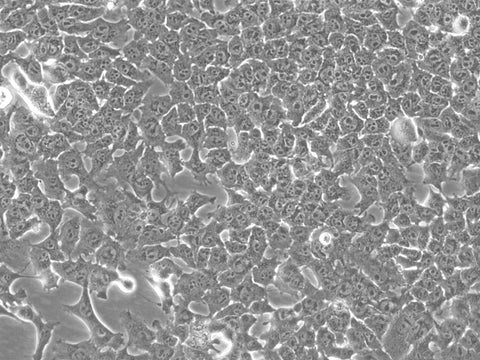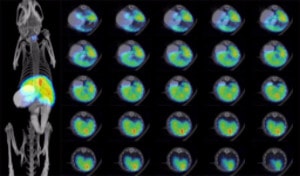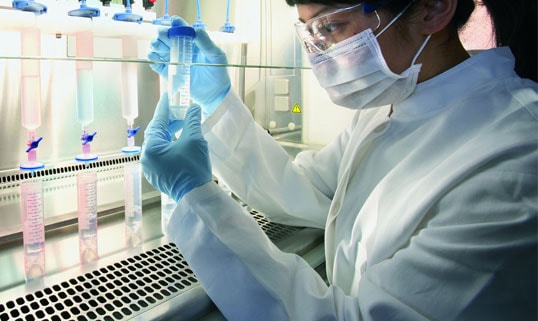Hepa1-6 Cells
Products
Hepa1-6-eGFP-Puro $ 1,500
Hepa1-6-Fluc-Neo $ 1,500
Hepa1-6-Fluc-Neo/eGFP-Puro $ 2,100
Hepa1-6-iRFP-Puro $ 1,500


Description:
Hepa1-6 (ATCC® CRL-1830TM) is a murine hepatoma cell line from a C57L mouse. The cells are adherent and have an epithelial morphology. Hepa1-6 cells will form tumors and spontaneous metastases post implantation into syngenic C57L/J mice.
Usage Information:
Hepa1-6 cells are suitable for in vitro and in vivo experimentation. Both syngenic C57L/J mice and immunocompromised mice can be used for in life studies, and will form tumors and spontaneous metastases following implantation of the cells, depending on the route of implantation (see below).
The following chart provides some examples of Hepa1-6 cells used for tumor formation and studies.
|
Route of Implantation |
Mice |
Tumor/Metastases |
References |
|---|---|---|---|
|
Subcutaneous |
C57BL6J |
Subcutaneous tumor |
Lei and Ling (2015) World J Gastroenterol 21: 10137-10149. Liu et al. (2000) Cancer Gene Therapy 7: 456-465. Wang et al. (2016) Cell Physiol Biochem 38: 306-318. Dan et al. (2001) Molecular Therapy. 4: 427-437. |
|
Tail vein |
C57BL/6 |
Lung metastases |
Lei and Ling (2015) World J Gastroenterol 21: 10137-10149. Yan et al. (2012) Hepatology 55: 1863-1875. Wang et al. (2016) Cell Physiol Biochem 38: 306-318. |
Note: The information in the table above is based on available data from the indicated references. It is not meant to be comprehensive and Imanis has not directly tested each condition.
Stable reporter cell lines:
Our Hepa1-6 reporter cell lines can be tracked in vivo, making them great tools for studying the mechanisms of tumor growth and metastasis, as well as evaluating the effects of various drugs or therapies in animals. Our Hepa1-6 cells are available with a variety of different reporters, including firefly luciferase (Fluc), enhanced green fluorescent protein (eGFP), or near-infrared fluorescent protein (iRFP). A dual reporter Hepa1-6-Fluc-Neo/eGFP-Puro cell line is available to facilitate multi-modality imaging.
In order to ensure high, constitutive expression of the reporter proteins, our cell lines are generated by lentivirus transduction. The lentivirus vectors used for these transductions are self-inactivating (SIN) vectors in which the viral enhancer and promoter has been deleted. This increases the biosafety of the lentiviruses by preventing mobilization of replication competent viruses (Miyoshi et al., J Virol. 1998).

